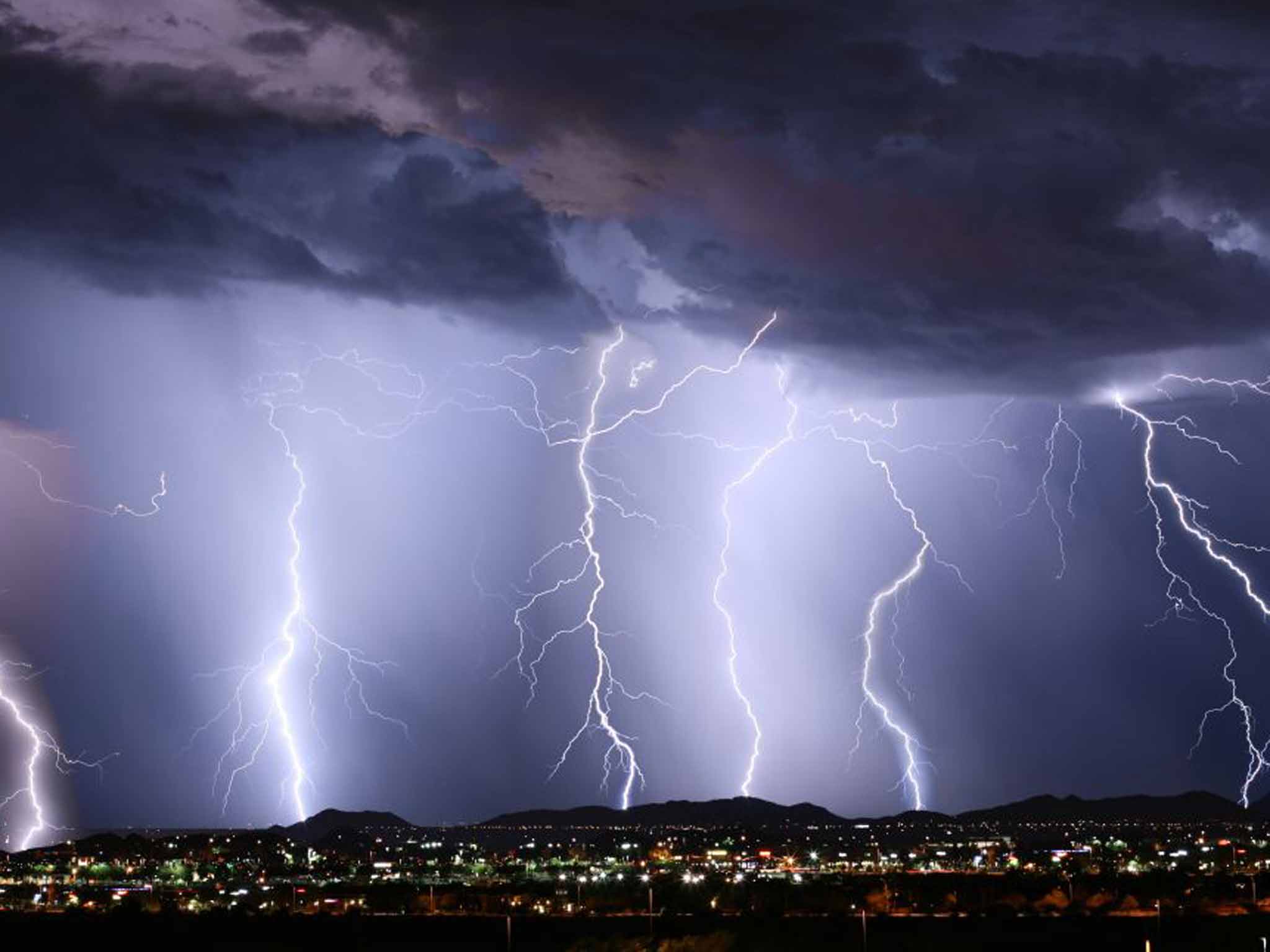How to survive electrical storms: What are the chances of being hit by lightning?
After two men died from lightning strikes at the weekend, Tom Bawden explains the science of storms – and busts some myths about what we should do to stay safe

It's a momentary flash that can leave a lasting impression. In the case of two men in the Brecon Beacons last weekend, tragically, it brought death. Lightning is an electric charge that travels through the air about 270,000 miles per hour, or 75 miles a second, and typically lasts for one 10,000th of a second. During its brief existence it burns at 30,000°C, or six times hotter than the Sun.
In the UK, it is most common in the south and south east – where temperatures are warmer and there are the most thunderstorms – with East Anglia being the riskiest part of the country and north-west Scotland the safest.
The lightning itself is caused by humid conditions in which hot air rises rapidly, forming a cloud as it cools. The water vapour turns to ice particles which collide violently, causing a powerful electric charge. During the shake-up, lighter, positively charged particles form at the top of the cloud while heavier, negatively charged ones sink to the bottom.
Opposites attract and so the negative charges seek out a positive charge to connect with, resulting in a bolt of lightning or electricity. Sometimes the charges connect within the same cloud and sometimes between clouds – and in these cases the resulting lightning is confined to the sky. But sometimes they connect with a positive object on the ground, such as a tree, tall building – or person. And that is when they cause trouble for humans.
About 50 flashes of lightning are generated every second across the world, or 1.4 billion bolts a year. About a quarter of these reach the ground, mostly around the Tropics – the mountain village of Kifuka in the Democratic Republic of Congo is the most struck place, with an average of 158 lightning bolts per square kilometre a year – and they kill about 24,000 people a year, injuring 240,000 more.
Survivors suffer ailments ranging from minor burns to strokes, brain damage and personality change, which must make Kifuka an interesting place. As for Britain, while it is relatively shielded, between 30 and 60 people are hit every year, with an average of three dying as a result of being hit by a lightning bolt. This is considerably lower than the 19 deaths per year in the 19th century, when more people worked outside and the risks were less well understood.
"Thankfully, the workforce has moved into buildings with adequate lightning protection," says Dr Chris Scott, a lightning expert from the University of Reading. "Most incidents today result from the increased popularity of outdoor leisure activities such as walking, golf, fishing and sailing."
Experts say that, when you see a flash of lightning, you should start counting until you hear the thunder to determine how far away it is – and whether you are in the danger zone. Each five seconds represent a mile, while the danger zone is six miles – meaning you should be on alert if the thunder peels before you get to 30.
Lightning bolts are attracted to the most prominent conductors in the area under and around the cloud and the best way to keep safe is to make sure that you're not near such an object. People in the area should steer clear of trees and stop participating in sporting activities or talking on the phone and, if indoors, they should stay away from windows and doors, while keeping off the landline.
Other tips: if you are outside in a storm and your hair stands on end, immediately crouch down on the balls of your feet to lower your height and minimise contact with the ground; and don't lie down, because that increases your contact with the ground.
Finally, to bust two myths: rubber shoes don't help; and the adage that lightning doesn't strike twice is wrong. It does. Especially if its conductor is a tall structure.
Join our commenting forum
Join thought-provoking conversations, follow other Independent readers and see their replies
0Comments